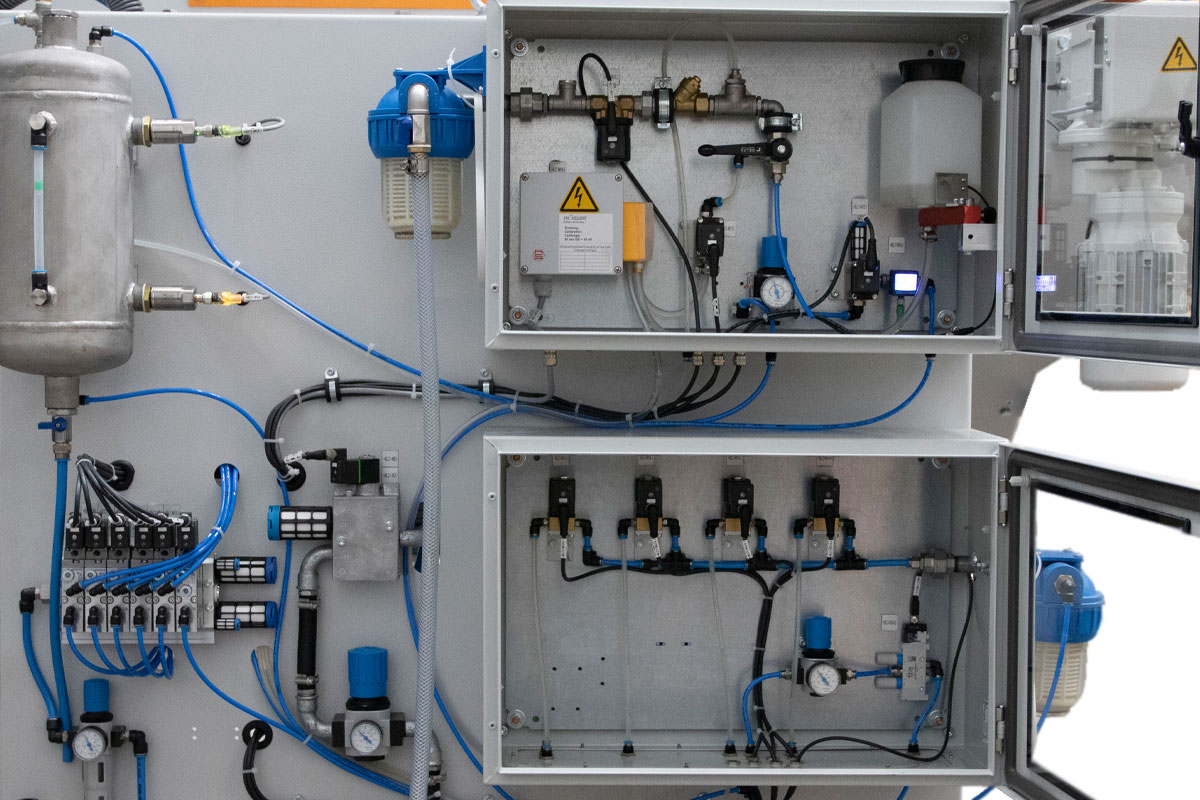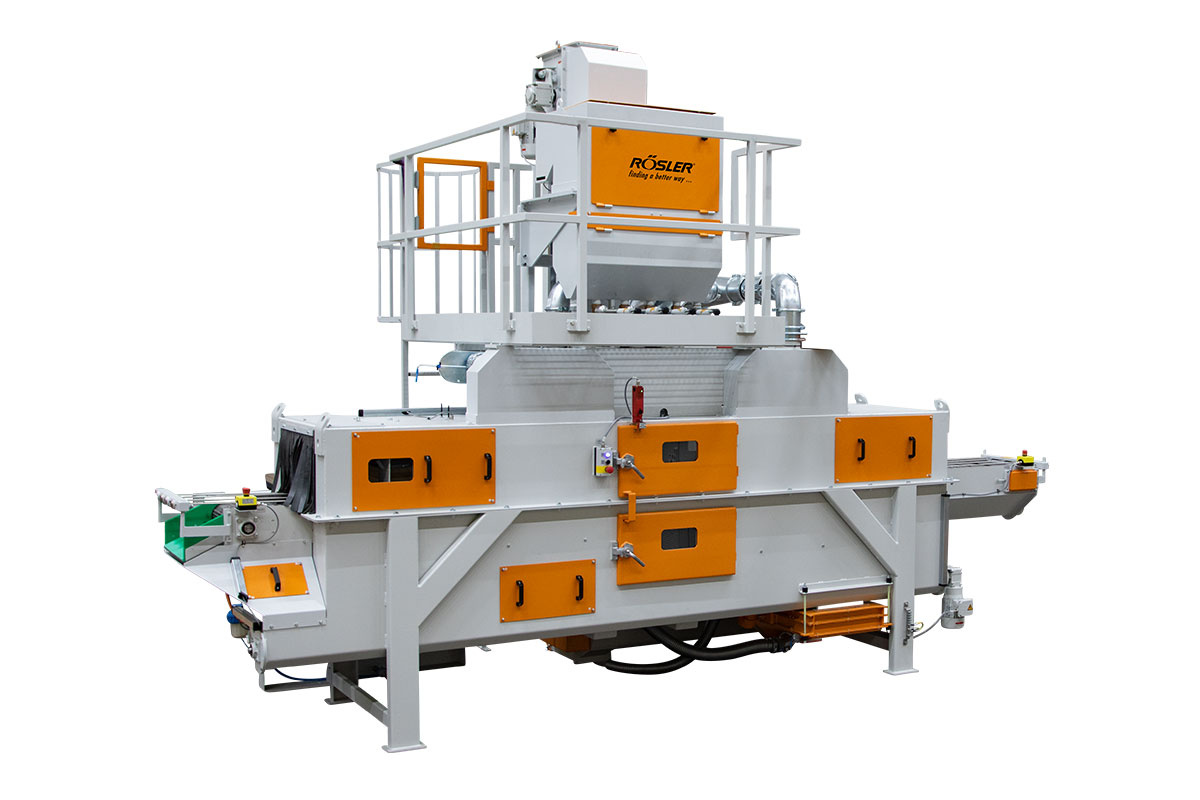
Rösler introduces fully automatic antistatic compound replenishment system - another milestone for process safety and quality
Electrostatic charges are frequently a reason for difficulties in our everyday life. The use of plastic blast media, such as polyamide, inevitably causes electrostatic charging of the media pellets, work pieces or dust particles with the result that these items are sticking to each other. This can impede the handling and functionality of the work pieces. Especially the carryover of dust and blast media can cause serious problems with downstream manufacturing operations ranging from equipment failures to the malfunction of electrical components.
For many years this problem has been overcome by the addition of liquid antistatic compounds, which are dosed into the blast chamber with special nozzles from a storage tank. The dosing quantity is predominantly controlled by timing relays, timing switches or timing functions in the PLC.
Fully automatic dosing of the antistatic compound offers significant benefits
To date the machine operator had to manually replenish the antistatic compound in the storage tank. This requires the mixing of a relatively small quantity of antistatic concentrate with a relatively large quantity of water. A major problem with the manual mixing procedure is that a permanent achieving the optimum mixing ratio is rather difficult. A poor mixing ratio will not lead to a sufficient remove of dust and residual blast media from the work pieces and can, therefore, seriously threaten the overall process safety.
With the development of the “automatic antistatic dosing equipment” the Rösler experts found a way to overcome this problem. For the automatic replenishment process the machine operator simply enters the exact mixing ratio between concentrate and water on the PLC touch panel. As soon as the minimum fill level in the storage tank has been reached, water is automatically added through the connected water pipe. At the same time a dosing pump is adding a precise quantity of antistatic concentrate from a special canister. This ensures that the pre-defined mixing ratio between water and antistatic compound is maintained during the entire shot blast process. The result is a drastic improvement of the process safety and quality. Faulty dosing of the antistatic concentrate and handling of the empty storage tank are, therefore, completely eliminated.
